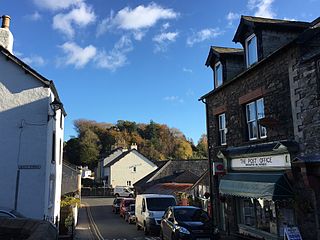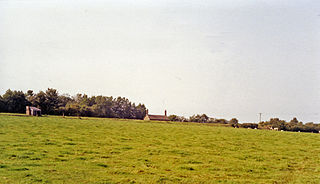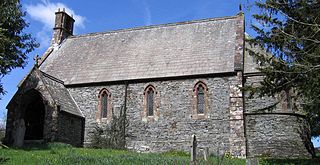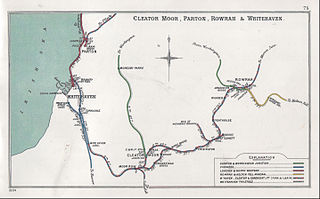
Foxfield is a railway station on the Cumbrian Coast Line, which runs between Carlisle and Barrow-in-Furness. The station, situated 11+1⁄2 miles (19 km) north of Barrow-in-Furness, serves the villages of Broughton-in-Furness and Foxfield in Cumbria. It is owned by Network Rail and managed by Northern Trains.

Broughton in Furness is a market town in the civil parish of Broughton West in the South Lakeland district of Cumbria, England. It had a population of 529 at the 2011 Census. It is located on the south western boundary of England's Lake District National Park in the Furness region of Cumbria, which was originally part of Lancashire before 1974.

Silloth was the terminus of the Carlisle and Silloth Bay Railway, a branch railway from Carlisle, England. The town, dock and station at Silloth were built on a greenfield site after the Carlisle & Silloth Bay Railway & Dock Act (1855) was passed. The railway provision grew with the dock and its later additions.

Coniston railway station was the northern terminus of the Coniston branch line in the village of Coniston, Lancashire, England.

Brigham railway station was situated on the Cockermouth and Workington Railway at its junction with the Maryport and Carlisle Railway's Derwent Branch. It served the village of Brigham, Cumbria, England.

Abbey Junction railway station was the railway junction where the branch line to Silloth on the Solway Firth divided from the Solway Junction Railway in the English county of Cumberland.

Great Broughton railway station briefly served the village of Great Broughton, near Cockermouth in Cumberland, England.

Torver railway station served the village of Torver, in Lancashire, England. It was on the branch line to Coniston.
The Coniston Railway was a railway in Cumbria, England, linking Coniston and Broughton-in-Furness, which ran for over 100 years between the middle of the 19th to the middle of the 20th century. It was originally designed for the transport of slate and copper ore from the mines near Coniston to the coast and later developed into a line for tourists to the Lake District. The line opened in 1859 and closed in 1962.

Woodland railway station served the hamlet of Woodland, in Lancashire, England. It was on the branch line to Coniston.

Lakeside railway station is on the heritage Lakeside and Haverthwaite Railway in England. It was previously the terminus of the Furness Railway Ulverston to Lakeside Line, which was closed as part of the Beeching Axe in 1965. It serves the village of Lakeside in Cumbria, as well as the tourist attractions located there.

Port Carlisle railway station was a railway station in Port Carlisle, Cumbria; the terminus on the Port Carlisle Railway, serving the village and old port and the steamer service to Liverpool that ran from here until 1856, when it was transferred to Silloth. Port Carlisle was two and a half miles away by train from Drumburgh and Glasson was one and a quarter miles away. The journey time to Drumburgh was nine minutes, although Glasson was a request stop.

Dearham Bridge was a railway station on the Maryport and Carlisle Railway (M&CR) serving the village and rural district of Dearham in Cumberland, England. The station was opened by the M&CR in 1842 as Dearham, but was renamed Dearham Bridge in 1867 when the M&CR opened a station in the village of Dearham, to which it gave that name. Dearham Bridge station lay in the Parish of Crosscanonby.

Woodland is a dispersed hamlet within the civil parish of Kirkby Ireleth in the Furness region of Cumbria, England, and is located in the southern part of the Lake District National Park, west of Coniston Water, between Torver and Broughton-in-Furness.

Island Road railway station was a railway station at the centre of Barrow Island, Barrow-in-Furness, England which operated between 1899 and 1967. It was built by the Furness Railway near the junction of the Ramsden Branch Line and a line which ran through the industrial areas of the town.
Rampside railway station was located on the Piel Branch of the Furness Railway in the Rampside area of Barrow-in-Furness, England.

The original Cleator Moor railway station was built by the Whitehaven, Cleator and Egremont Railway. It served the rapidly urbanising town of Cleator Moor, Cumbria, England.

Linefoot railway station, sometimes referred to as Linefoot Junction and sometimes as Linefoot Goods, briefly served the scattered community around the crossroads at Linefoot, near Cockermouth in Cumberland, England.

Cumberland and Westmorland Convalescent Institution railway station was a terminus off the short Blitterlees Branch off the Carlisle and Silloth Bay Railway, within Silloth itself. The larger railway ran from Carlisle, England. The station does not appear on standard railway maps, but it can be discerned with a magnifying glass on at least two published maps and clearest of all on the 1914 25" OS map.
Silloth Battery Extension railway station was the terminus of the Blitterlees Branch, which turned southwards off the Carlisle and Silloth Bay Railway's Silloth Branch a short distance east of Silloth station. The larger railway ran from Carlisle, England. The Bitterlees Branch does not appear on standard railway maps, but it is clear on OS maps, though the station is not identifiable as such.


















